For years, 5% Nutrition has led the industry in the "more of everything" category of bodybuilding supplements and sports nutrition. This is an excellent case of a brand taking on a personality that mirrors its founder. Rich Piana, after all, could certainly not be accused of moderation or having a conservative mindset. Everything he did was big.
This legacy continues to roll on at 5% Nutrition, where they are maintaining this same "more is better" ethos. Now, we're getting one of their classic formulas in one of our favorite delivery formats.
KILL IT RTD: Go Big or Go Home in One Huge Chug
Rich Piana's powdered KILL IT pre-workout formula has been around since 2015. It was a hit then, and it's a hit now. 5% Nutrition even gave it an extra boost and released KILL IT RELOADED.
Now, they're revisiting the old KILL IT formula, this time in a new package and form factor - and a lot more caffeine. We're finally getting a KILL IT RTD, meaning we get to take classic pre-workout in the most convenient manner of all time: a pre-made drink. Just twist off the top, drink, and prepare for Rich Piana style power.
It has 400 milligrams of caffeine per bottle, so you better be Rich-ready. This article gets into the label, which brings a ton of glycerol for pumps as well. Let's check in on prices, get you signed up for our 5% Nutrition news alerts, and then have at it:
Rich Piana 5% Nutrition Kill It RTD – Deals and Price Drop Alerts
Get Price Alerts
No spam, no scams.
Disclosure: PricePlow relies on pricing from stores with which we have a business relationship. We work hard to keep pricing current, but you may find a better offer.
Posts are sponsored in part by the retailers and/or brands listed on this page.
5% Nutrition KILL IT RTD Ingredients – How It Works
-
Glycerine - 10g
Glycerol, also known as glycerine, is a sugar alcohol that attracts and retains water it encounters.[1] Once consumed, glycerol disperses throughout the body and increases total water volume, resulting in hyperhydration when consumed with enough water.[2] This unique hydration pump creates a more significant and "swole" feeling in the gym.
While most research on glycerol focuses on endurance, studies have shown that it also increases power output.[3] In addition to providing hydration and increasing total volume, glycerol improves heat tolerance and reduces the strain on the cardiovascular system when training[4]. It increases blood flow, which is an additional benefit when combined with other ingredients such as citrulline and Nitrosigine.[5]
Glycerol consumption has been shown to enhance water retention, endurance, and cell volumization. This leads to more gains, more size, and more volume. What more could you ask for?
While most pre workout powders that utilize glycerol (Kill It Reloaded included) are forced to use lower doses since the osmolyte loves to suck up water and clump, we normally don't see doses this big. But in liquid form factor, we can get a huge 10 gram dose!
Drink this one with plenty of water during your workouts (either with ALL DAY YOU MAY or the new 5% Nutrition Hydrate STK), and get ready to see the muscle bellies shine with hydration pumps galore. Next up? Nitric oxide.
-
L-Citrulline - 4g
L-citrulline is a well-known nitric oxide booster among athletes. This amino acid helps the body produce more L-arginine, which in turn generates more nitric oxide (NO),[6] resulting in vasodilation, the relaxation and expansion of blood vessels.[7,8]
This effect increases blood flow, leading to muscle pumps, reduced blood pressure, and better nutrient delivery. Unlike direct arginine supplementation, which the digestive system breaks down quickly, L-citrulline is more effective in humans.[7]
L-citrulline is converted into arginine later on, allowing the body to produce more nitric oxide without wrecking the gut.[9,10] In addition to promoting blood flow and pumps, L-citrulline also improves ATP production, work output, and recovery.
Another great dose - at 3 grams, we have clinical evidence that nitric oxide levels get boosted. 5% Nutrition goes 33% above that though, and there's still some more NO action coming from Nitrosigine below!
-
Beta-Alanine - 3.2g
Compare to KILL IT RELOADED, which has reloaded in a big way. Hope you like getting pumped up!
Beta alanine, a well-known endurance-boosting amino acid, combines with L-histidine to generate more carnosine.[11,12] Carnosine helps buffer lactic acid in muscle tissue, prolonging endurance. Several studies and meta-analyses have demonstrated beta alanine's efficacy in improving endurance for exercises lasting from 30 seconds to 10 minutes,[13] including endurance sports such as rowing, running, swimming, cycling, and weightlifting.
In addition, a 2019 safety study found that beta alanine was non-toxic and did not adversely affect consumers.[14] Although the high dose of beta alanine used in this product may cause a tingling effect (paresthesia), it is considered safe.
The 3.2 gram dose of beta alanine in Kill It RTD combined with 400 milligrams of caffeine is sure to provide a noticeable effect you can feel. This is the clinical daily dose in tons of studies, so you are likely to get to carnosine saturation expeditiously with Kill It RTD as your pre-workout.
-
Taurine - 2g
To partner with the glycerol above (and betaine below), taurine promotes increased water retention in cells and "osmotic swelling",[15] protecting the mitochondria from stress and promoting better energy production throughout the body.[16]
Taurine's effect on endurance, with success in doses anywhere from 1 gram to 6 grams - and on the first use too.[17]
Taurine is used for multiple purposes in sports nutrition, ranging from increased cell volumization pumps to increased endurance. The major endpoint of taurine consumption is endurance, and a meta-analysis of ten studies that used taurine concluded that it is useful for promoting endurance when used daily in doses ranging from 1 to 6 grams, and it generally works on the first use.[17]
Taurine also functions as an antioxidant by fighting oxidative stress, improving the absorption of lipids, and helping to improve nitric oxide production and blood flow.[18] Additionally, taurine has a positive effect on concentration and cognition, which is likely due to the importance of blood and water flow to the brain.[19]
This ingredient is incredible, and we're very pleased to see more and more brands like 5% Nutrition get away from the same old one-gram dose and move into bigger and better doses - just the way Rich would want it!
-
Betaine - 1g
Betaine, also known as trimethylglycine (TMG), is an inexpensive, safe, and effective substance that falls under the category of ergogenic aids. Ergogenic aids are substances or techniques that can enhance athletic performance, including well-known supplements like caffeine and creatine.
5% Nutrition Hydrate STK is a well-formulated electrolyte-laden stick pack with plenty of potassium and a mood-booster known as SAMe that we don't see often enough!
Betaine can increase the production of adenosine triphosphate (ATP),[20] the usable form of energy that cells consume to perform work, leading to improved cellular function and better athletic and cognitive performance. It achieves this by donating methyl groups to critical processes involved in cellular metabolism,[21] making it one of the most powerful methyl donors known to nutritional science.[22] Betaine's ability to provide methyl groups is also beneficial to cardiovascular health, as it can help lower homocysteine levels,[23] an amino acid that can increase the risk of serious cardiovascular disease.[24]
Betaine also acts as an osmolyte, which affects the behavior of biological fluids in the body. Specifically, it increases osmotic pressure around the cells, which draws extra water into the cells. This hyperhydration effect can lead to better access to nutrients,[25,26] improved resistance to heat shock,[27] and can ultimately enhance strength, power, and body composition when dosed a bit higher.[28-33]
So if you want to get serious, you'll need to find 1.5 grams more of betaine in your stack. One unique place you can get more betaine is actually in 5% Nutrition Core Beet Root if you're looking to maximize cardiovascular health.
-
Inositol-Stabilized Arginine Silicate (Nitrosigine) - 750mg
To improve arginine's effectiveness, researchers at Nutrition21 created and patented inositol-stabilized arginine silicate, which they named Nitrosigine. This ingredient increases the bioavailability of L-arginine, keeping it around long enough to generate a substantial nitric oxide boost that lasts longer than plain L-arginine or L-arginine HCl[34,35]. Nitrosigine also limits arginase activity,[36] preventing the breakdown of arginine.
Not only does Nitrosigine immediately boost N.O. levels, it keeps them elevated for a period of up to 2 weeks!
At 1500 milligrams per day -- which we unfortunately don't have here -- Nitrosigine has been shown to be beneficial for cognitive performance, energy, focus, and overall cognitive flexibility,[35,37-42] and it has been shown to prevent cognitive decline caused by extreme exercise.[35,37]
Finally, Nitrosigine can also reduce muscle inflammation and damage in a similar way to citrulline.[43]
While we don't have the dose that's most clinically studied, we're very confident that this will still provide a boost, especially with all of the other pump agents. Nitrosigine's synergistic effects with citrulline make Kill It RTD that much more effective.
-
Caffeine - 400mg
As far as caffeine goes, Kill It RTD opted out of erring on the light side. This is definitely in the higher-stim category of pre-workout supplements. Using a blend of caffeine anhydrous, caffeine citrate, and dicaffeine malate, Kill It RTD yields 400 milligrams of caffeine per container.
Known since 1991, very high dose caffeine can seriously boost performance.[44] As you can see, it's quite variable amongst users - future research would show that caffeine's effects depend on your genotype.
Once you start dosing caffeine in the 400 milligram range, some studies have suggested direct strength increases as well, depending on bodyweight. Two reviews have shown that a caffeine dose of around 5-6 milligrams per kilogram of bodyweight can significantly boost strength.[45,46]
-
Tripotassium Citrate Monohydrate - 196mg
Tripotassium citrate monohydrate is the tribasic potassium salt of citric acid, also known as potassium citrate. Potassium is considered a "shortfall nutrient" by researchers,[47] indicating that most Americans do not consume enough through their diet. Potassium-sodium interactions are the basis of much of the research on potassium and cardiovascular health.[47] Studies have demonstrated that higher potassium:sodium intake ratios can lower blood pressure and reduce the risk of heart disease more effectively than focusing solely on sodium.[48,49]
Potassium can also help improve bone mineral density by enhancing calcium retention.[50,51] However, it is challenging to consume enough potassium because the suggested daily intake was set at 4700 milligrams per day in 2004,[52] but most Americans only consume about half of that.[53] This makes the supplementation of potassium an important consideration when looking to optimize performance and the balance with sodium.
-
L-Theanine - 100mg
400 milligrams of caffeine seem too high? Well this may help take the edge off a bit.
Need to reduce some cortisol? Then ashwagandha is your herb and this is your supplement. 5% Nutrition Core KSM-66 is another way to try to reduce the intensity of caffeine.
L-theanine is a naturally occurring amino acid found in Camellia sinensis, the plant from which white, green, oolong, and black teas are derived. In the human brain, theanine acts as a neurotransmitter[54] and has a relaxing effect that reduces anxiety by inhibiting neurotransmission[55-57] without causing sedation.
Theanine's ability to synergize with caffeine has been discovered to enhance mood and cognition, outperforming the effects of either ingredient alone.[58] The combination of theanine and caffeine improves mental accuracy, reduces fatigue, speeds up reaction times, and increases numerical working memory.
It also improves the ability to judge written texts and increases alertness.[58] Theanine increases attention and reduces reaction time, particularly in stressed individuals. Furthermore, theanine is known to improve sleep quality and reduce resting heart rate,[59] and it does this by upregulating GABA,[60] which is a calming neurotransmitter that inhibits neurotransmission.
-
Coconut Water Powder - 100mg
In addition to the tripotassium citrate monohydrate, we get a little bit of extra potassium from coconut water power, along with a nice serving of other electrolytes. Coconut water powder has been validated by research as an effective hydration beverage.[61]
-
Sodium Citrate Dihydrate - 86mg
Sodium helps maintain proper fluid balance within cells and outside of cells in the body,[62] making it vital for muscle contraction and nerve signal transmission - both essential for athletes.
When athletes sweat during intense training sessions but only replace fluids with water, their sodium levels can deplete, leading to poor performance, muscle cramping, and in severe cases, hyponatremia.[63] Therefore, it is important to at least replace what has been lost. Generally, humans need to replace around 2 grams of sodium per day, which is why many organizations recommend a daily intake of 2.3 grams (equivalent to a teaspoon of table salt).[64] However, for those who train hard and sweat profusely, sodium requirements are generally higher.
5% Nutrition has opted for the citrate form of sodium, which is different from the commonly used sodium chloride (table salt) found in other products. One study found that high-dose sodium citrate improved running performance in elite athletes compared to a placebo.[65]
-
Huperzia serrata Club Moss Extract - 10mg
Huperzine A, a constituent of Huperzia serrata club moss extract, can enhance acetylcholine levels by slowing down its degradation process, rather than increasing its production.
This is achieved through the inhibition of acetylcholinesterase, an enzyme responsible for breaking down acetylcholine.[66] By blocking this enzyme, huperzine A can effectively increase acetylcholine levels in the brain.[67]
The reason why we want to increase acetylcholine levels is that it is known as the learning neurotransmitter, facilitating communication between neurons and supporting long-term potentiation (LTP).
Moreover, huperzine A acts as a robust antioxidant and can safeguard neuronal mitochondria against oxidative stress damage.[68]
As for this dose, usually it's standardized to 1% Huperzine A, but we're not sure with this label. In general, we'd think this is a 100 microgram dose, which is right in the median range we normally see.
All 5% Nutrition KILL IT RTD flavors
5% Nutrition KILL IT RTD is launching in two flavors: Tropical Punch and Wild Berry. Check out our up-to-date list of KILL IT RTD flavors below:
Quick, Convenient Intensity
We love ready-to-drink formulas. They're quick, easy, and convenient. There's no need to carry around a tub of powder when you're on the move. Simply throw a bottle in your gym bag or ammo can, grab your keys, and drink on the way. You know you're getting the right dosages every time.
As is the case with most, if not all, 5% Nutrition products, the KILL IT formula holds nothing back. With strong doses of glycerine, citrulline, and caffeine, it's virtually impossible to have a sluggish workout when you're powered by one of these.
Rich Piana 5% Nutrition Kill It RTD – Deals and Price Drop Alerts
Get Price Alerts
No spam, no scams.
Disclosure: PricePlow relies on pricing from stores with which we have a business relationship. We work hard to keep pricing current, but you may find a better offer.
Posts are sponsored in part by the retailers and/or brands listed on this page.
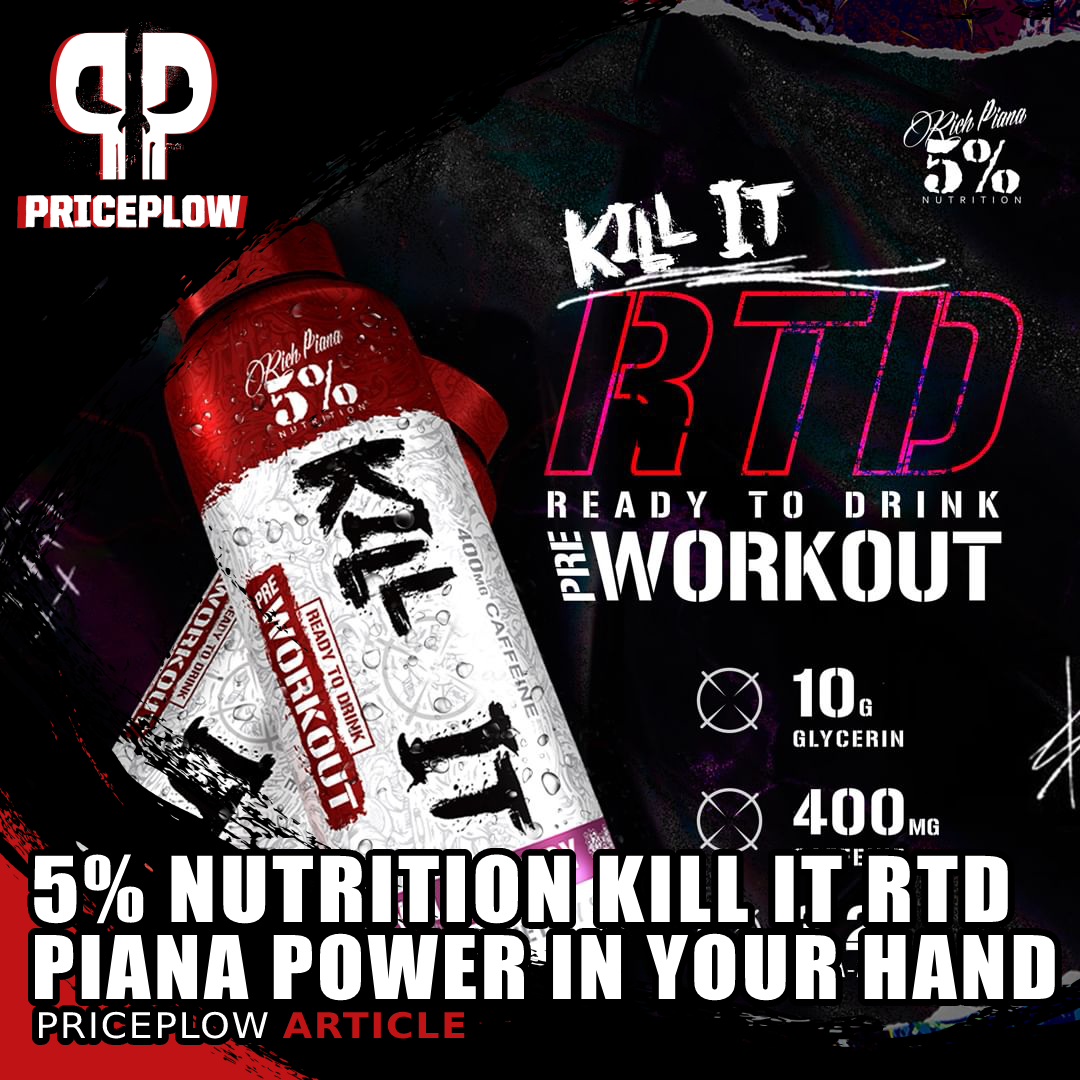
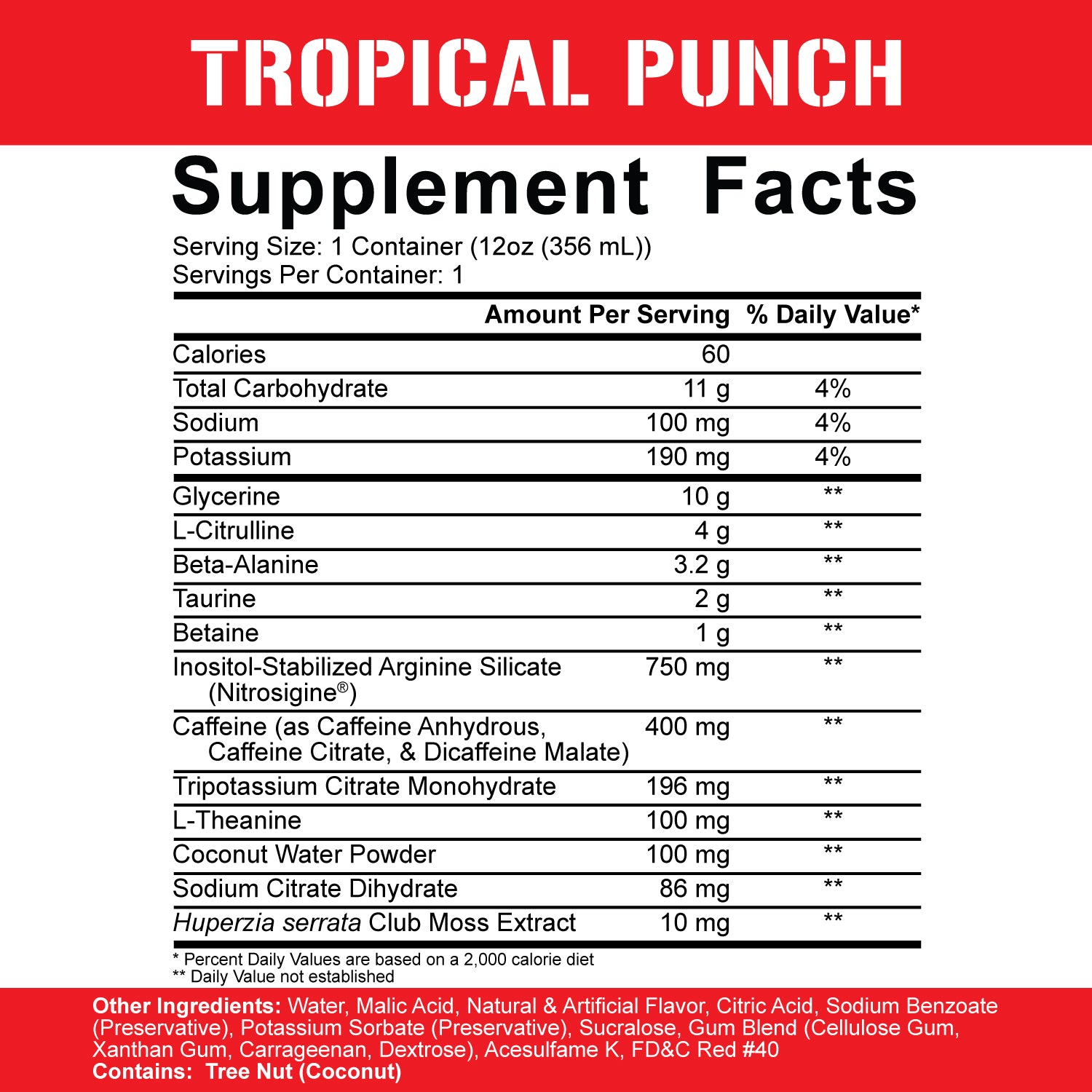
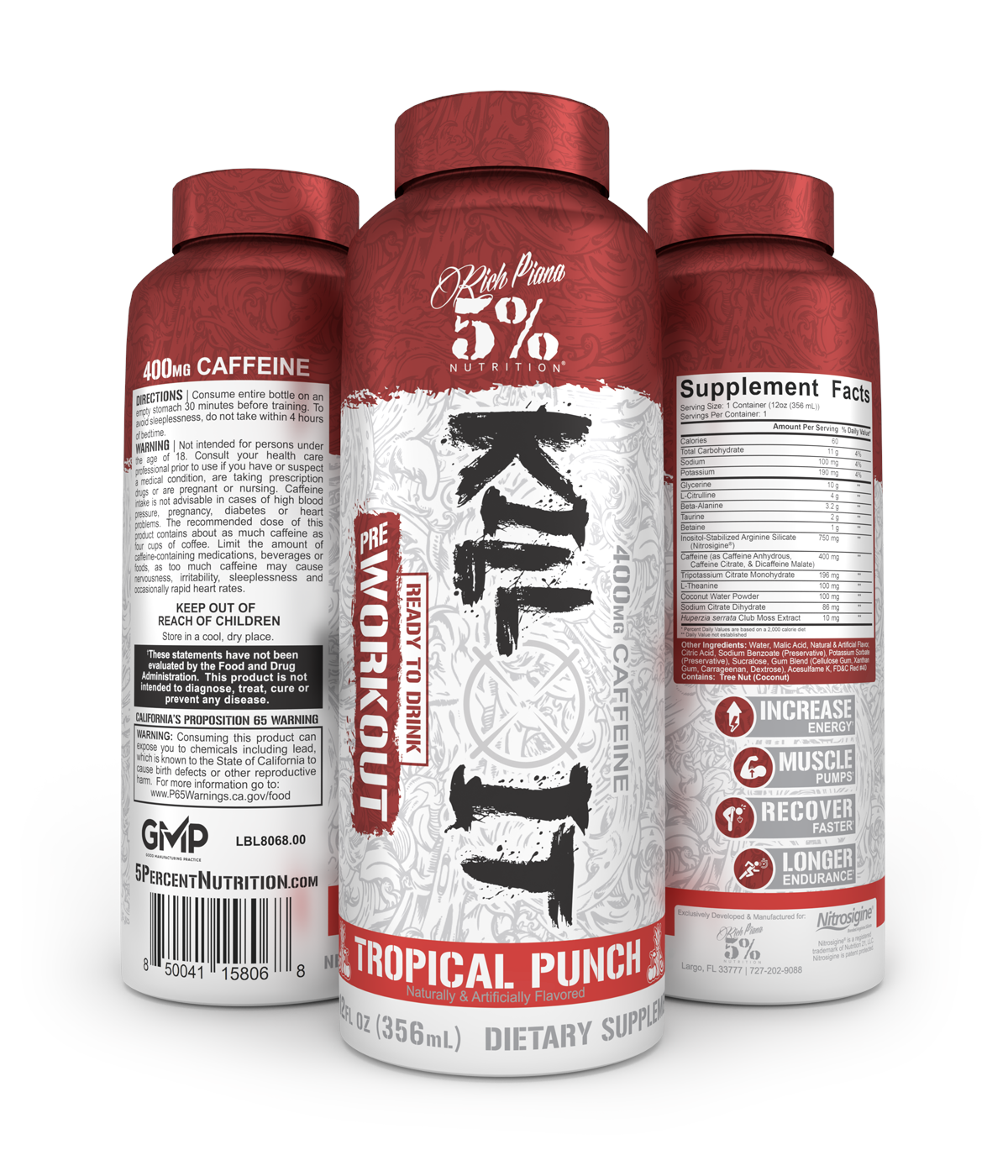
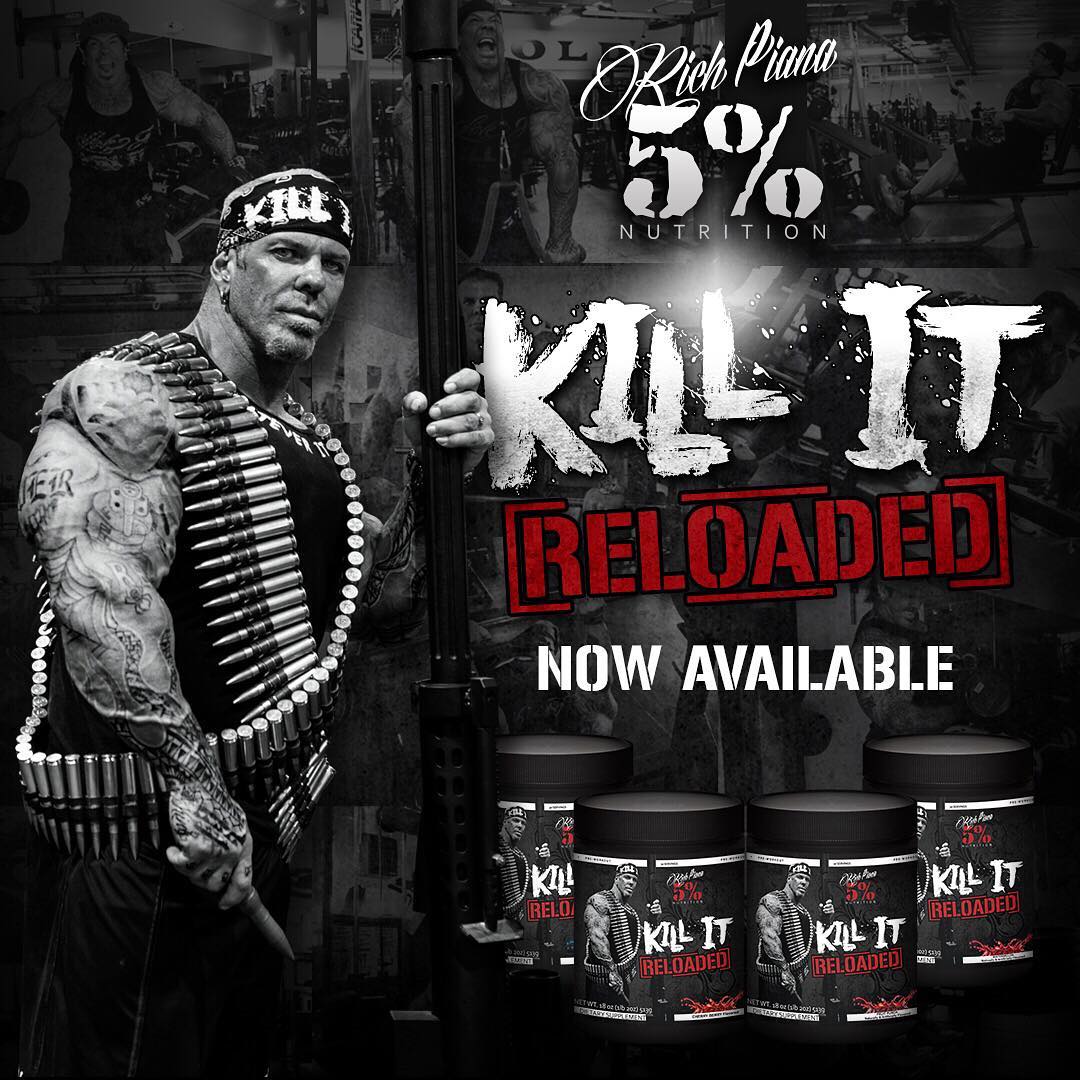
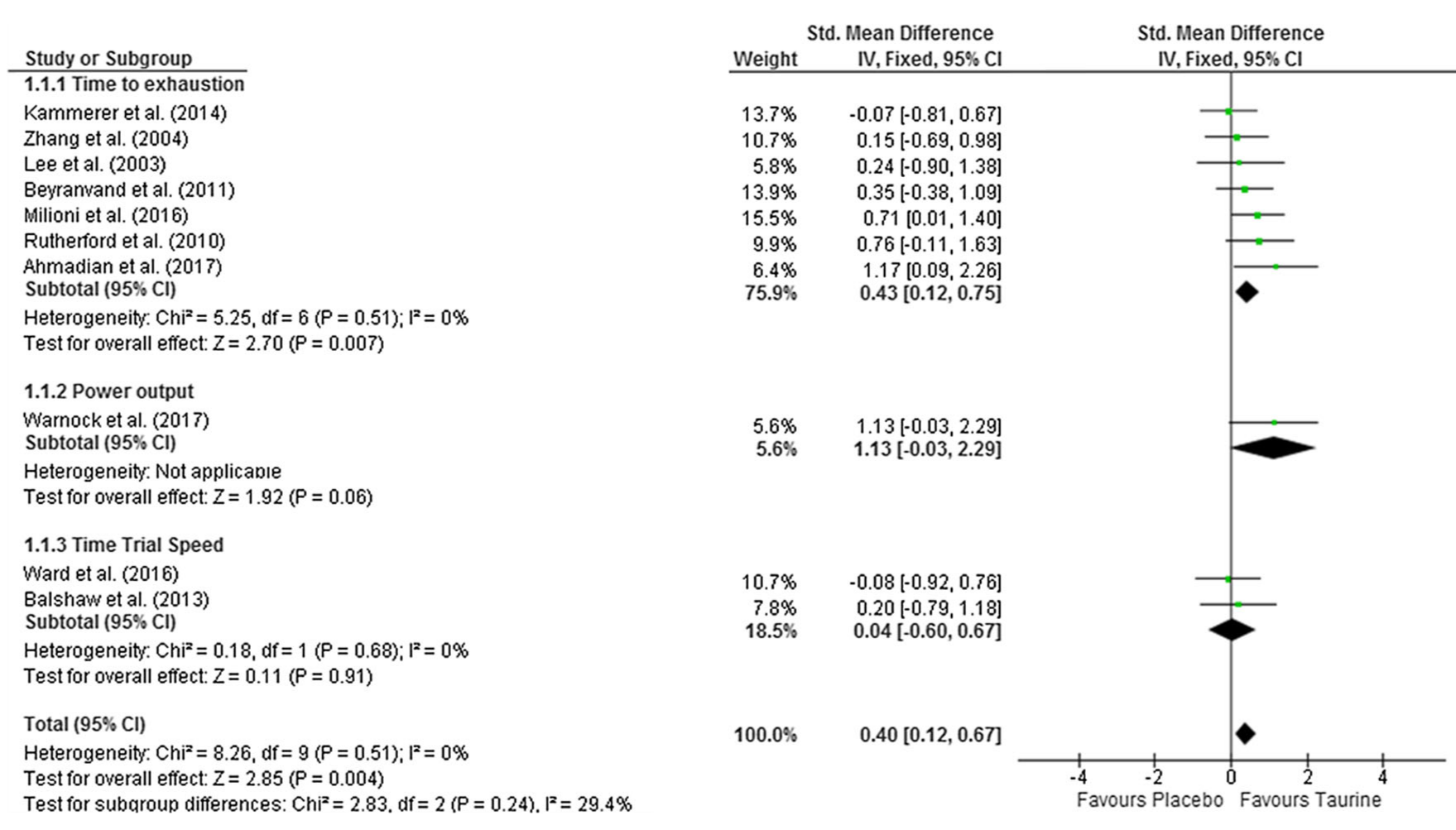
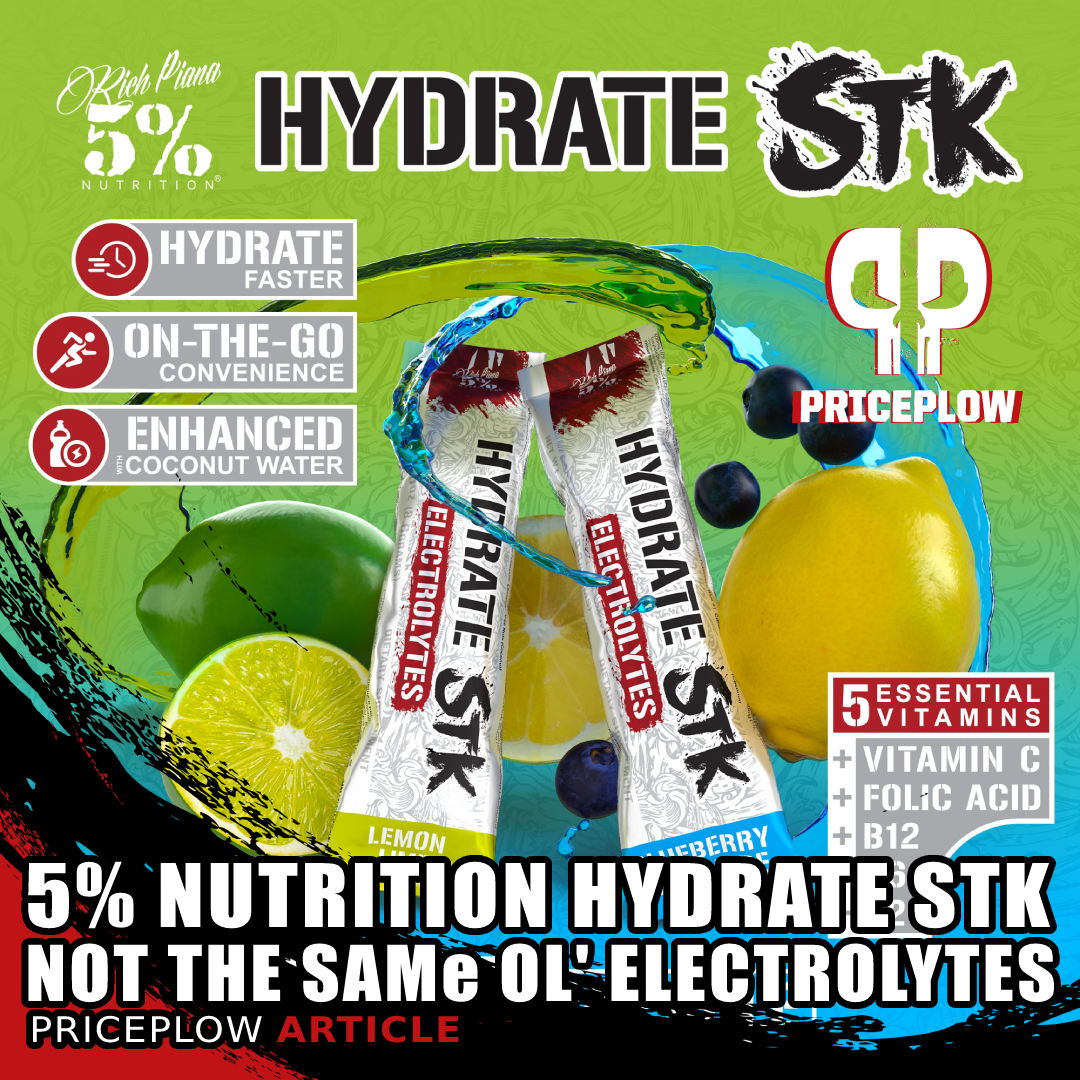
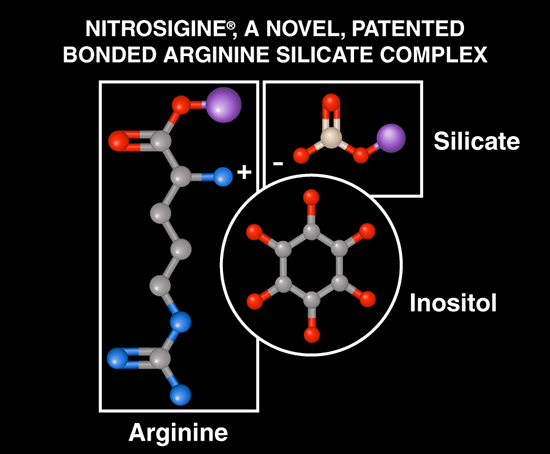
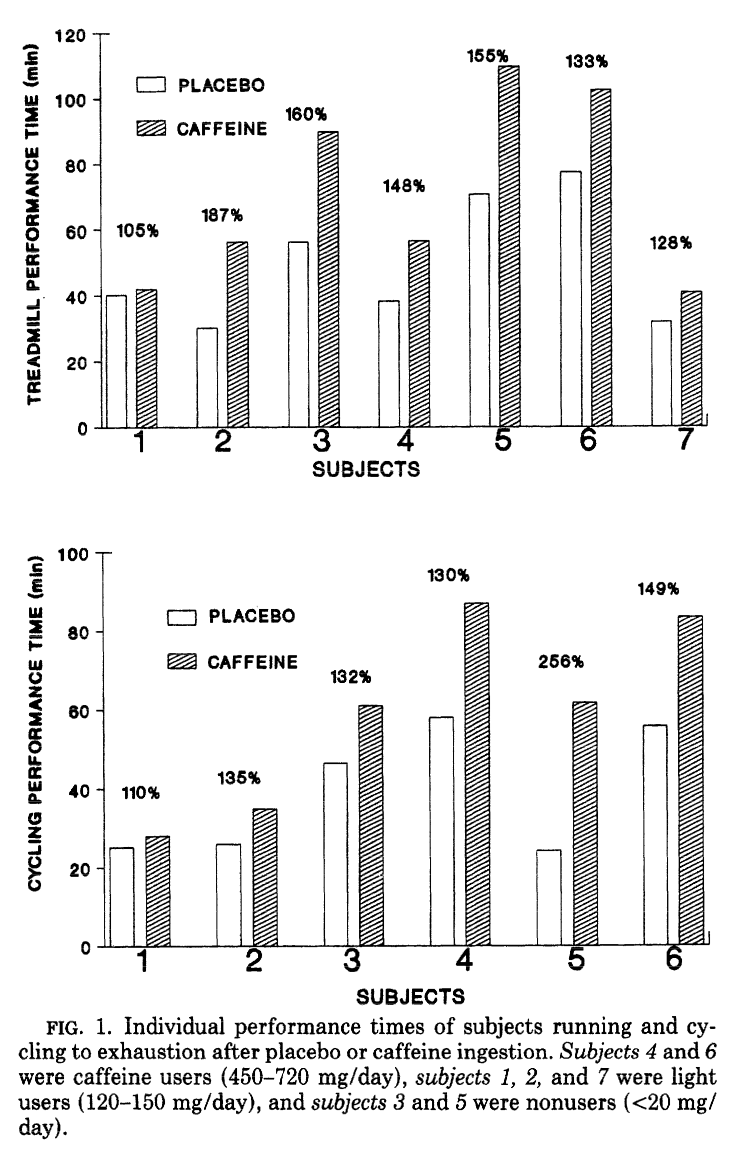
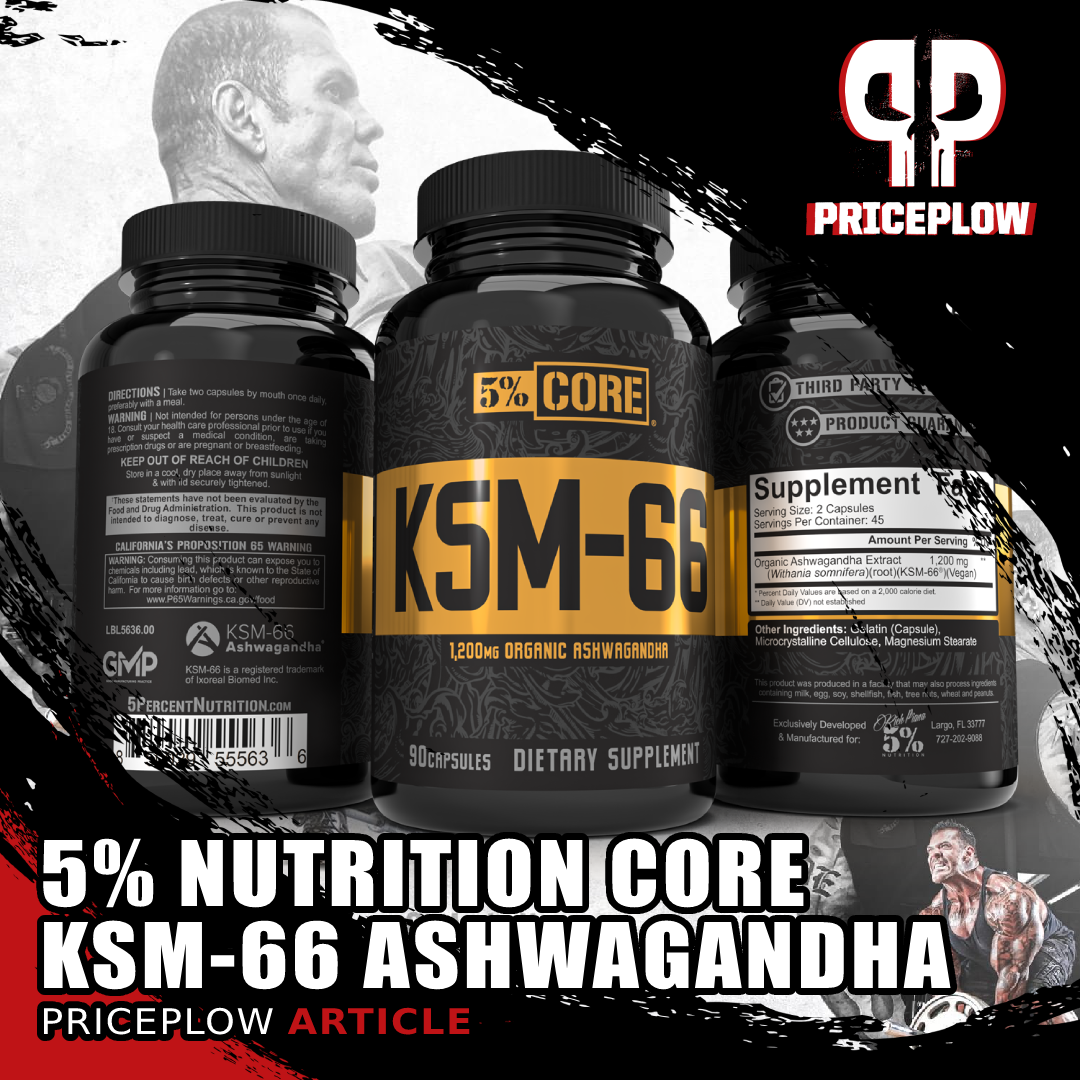
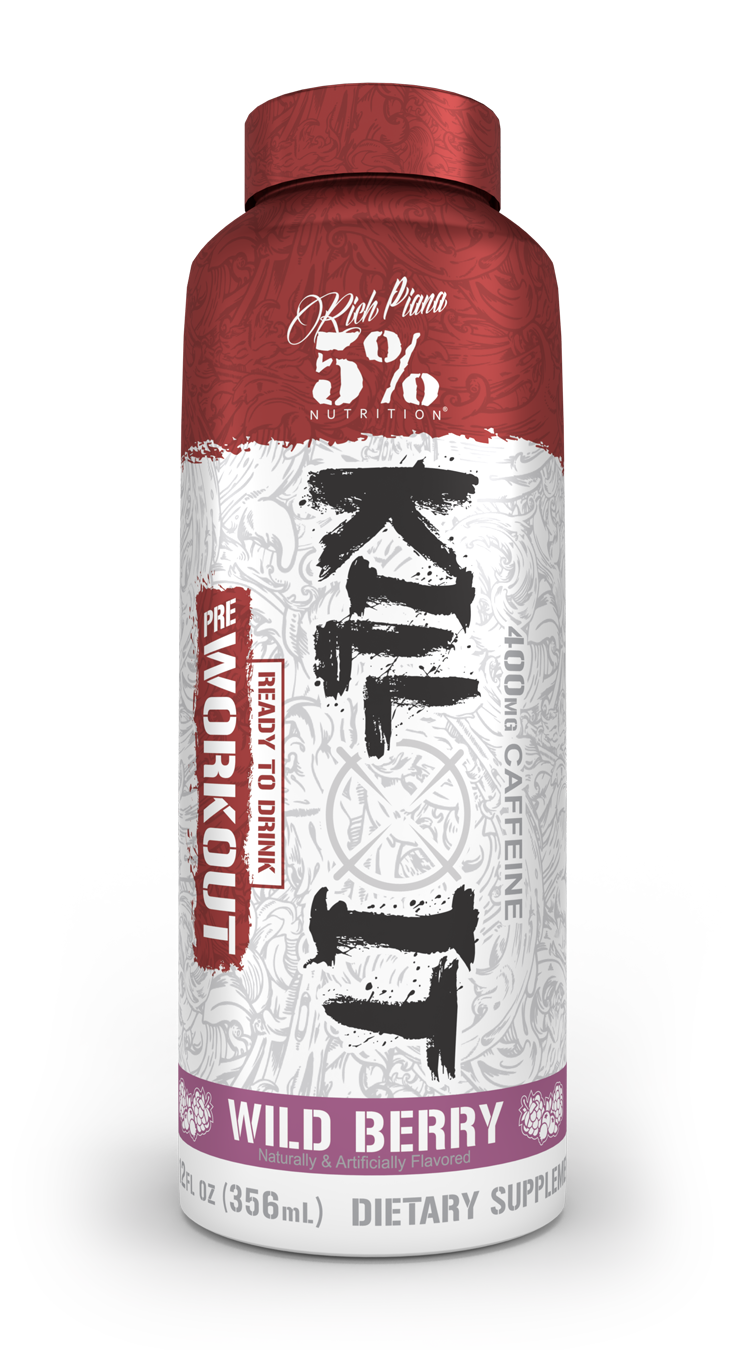
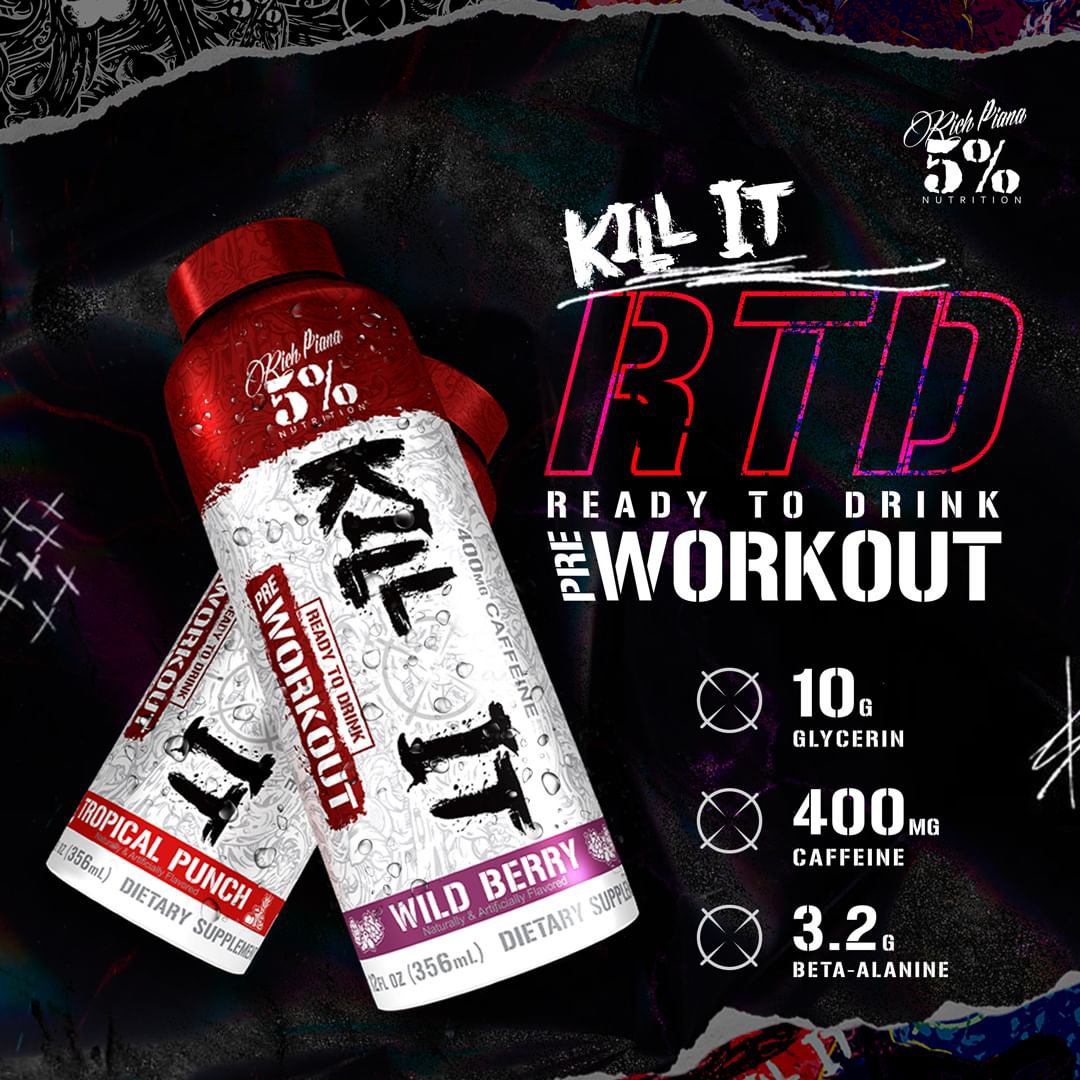


Comments and Discussion (Powered by the PricePlow Forum)